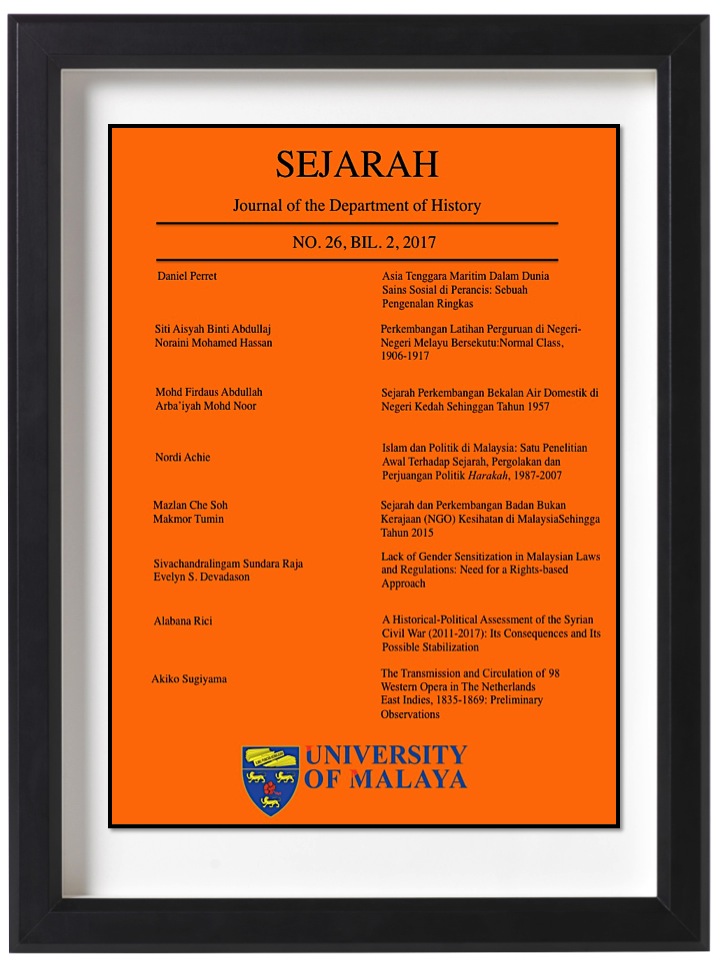THE TRANSMISSION AND CIRCULATION OF WESTERN OPERA IN THE NETHERLANDS EAST INDIES, 1835-1869: PRELIMINARY OBSERVATIONS
Abstract
In October-November 1835 eight French professional performers directed by Ferdinand Minard completed six vaudeville shows in Batavia. The shows were highly acclaimed as they enlivened Batavia’s cultural life dominated by productions and performances by amateur artists. Inspired by the novel experience, local dilettantes were now calling for more professional shows, especially opera. Much to their delight, Minard and his ten some performers returned to Batavia in October 1836, specifically for operas. The second residency of Minard and his troupe marked the first known season of Théâtre-Français (French Theatre) that would continue into the 1860s and beyond under the successor series Théâtre Français de Batavia (French Theatre of Batavia). The arrival of Minard and his performers was a catalyst for a few important shifts in Batavia’s cultural life among European residents. It set in motion a tradition of annual professional and commercial productions by visiting performing artists. Minard’s engagement in 1836 included select performances of Italian opera, which placed Batavia within the emerging world culture of Italian opera. The journeys of Minard and his performers also saw early uses of steamboat and hotels that were antecedent to the age of steam to usher in globally with the opening of the Suez Canal in 1869. By focusing on Batavia, this article makes a fresh contribution to the global study on the transmission and circulation of Western opera in Southeast Asia.


